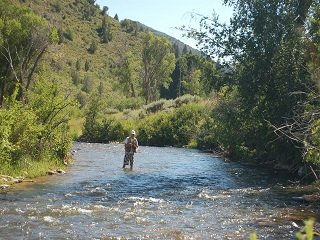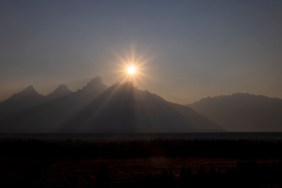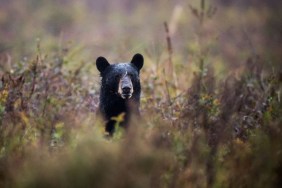 Summer trout fishing on the river can mean a number of factors that will force anglers to adapt and think outside the box if they want to hook into fish during the torrid months. In regions where the elevation can reach high levels, trekking to higher altitudes helps. Staying dedicated to the sport and waking up to fish early in the morning or late at night is advised as well. These are just a few of the helpful hints that will enable trout anglers to find activity on the river even when the temperatures reach nearly unbearable levels.
Summer trout fishing on the river can mean a number of factors that will force anglers to adapt and think outside the box if they want to hook into fish during the torrid months. In regions where the elevation can reach high levels, trekking to higher altitudes helps. Staying dedicated to the sport and waking up to fish early in the morning or late at night is advised as well. These are just a few of the helpful hints that will enable trout anglers to find activity on the river even when the temperatures reach nearly unbearable levels.
One common occurrence on the river during the summer is river closures. State DNR officials take precautions to protect fish species when it gets too hot, and often times will shut down sections of a river to preserve the fish and the economy for popular destinations. This can hinder your plans, which is why it’s important to keep up-to-date on conditions where you’ll be fishing, but also to have a backup plan if faced with such a road block in your agenda. To find out if there are any closures where you’ll be, contact the local DNR and if you’re heading to a state or national park, visit their website often to stay on top of things.
As the outside temperature rises, so does the water temperature. To compensate, trout will move to deeper pools to seek comfort. Also, like most other species, they will restrict their feeding habits and general activities to early in the morning and late in the day, when the sun—and, thus, the temperature—is least intense. Furthermore, bright sun with no cover means trout are exposed to predators such as ospreys and, in some areas, bears. Because of this, they’ll seek cover under overhanging embankments, rocks, and logs. Carefully pick apart these areas and be patient, as it may take some time to entice a skittish trout from safety.
Low temperatures and cloudy skies will cause trout to prowl the rivers in search of food. To capitalize on this, head out just before sunrise and scout the water for good locations where activity is apparent or provide optimal conditions for fish. Remember these spots for the last hour or so before sundown, as well. Insect life cycles don’t cease or slow down due to high temperatures, and late evening feeding frenzies are common in many parts of the country.
Besides knowing how trout react to temperatures changes is important, but remembering to take precautions for yourself, and preparing for hot days, is integral as well. Be sure to dress for the warm weather and drink plenty of water to compensate. Unbearable heat is only more unbearable if you’re uncomfortable and wearing too much—or the wrong—clothing. Thin, moisture-wicking, breathable layers are smart choices, as are wide-brimmed hats to keep the sun off your neck and face. Furthermore, the best part about being on the river is the option to wade into the water and fish while allowing Mother Nature to keep you cool. Also, try to invest in mesh-based wading vests, as they keep you cooler than full chest packs. After all, if you’re miserable in the heat, you’re not going to want to fish.
If your fishing goals find you on the river this summer, be sure to be conscious of the effects that heat has on everything, from the fish to your own health. Stay on top of river conditions where you’ll be fishing and be prepared to change your location if the need arises. Keep your eyes open to opportunities on the water and take advantage of them should they arise—whether they involve the fish or simply a means of cooling off!








